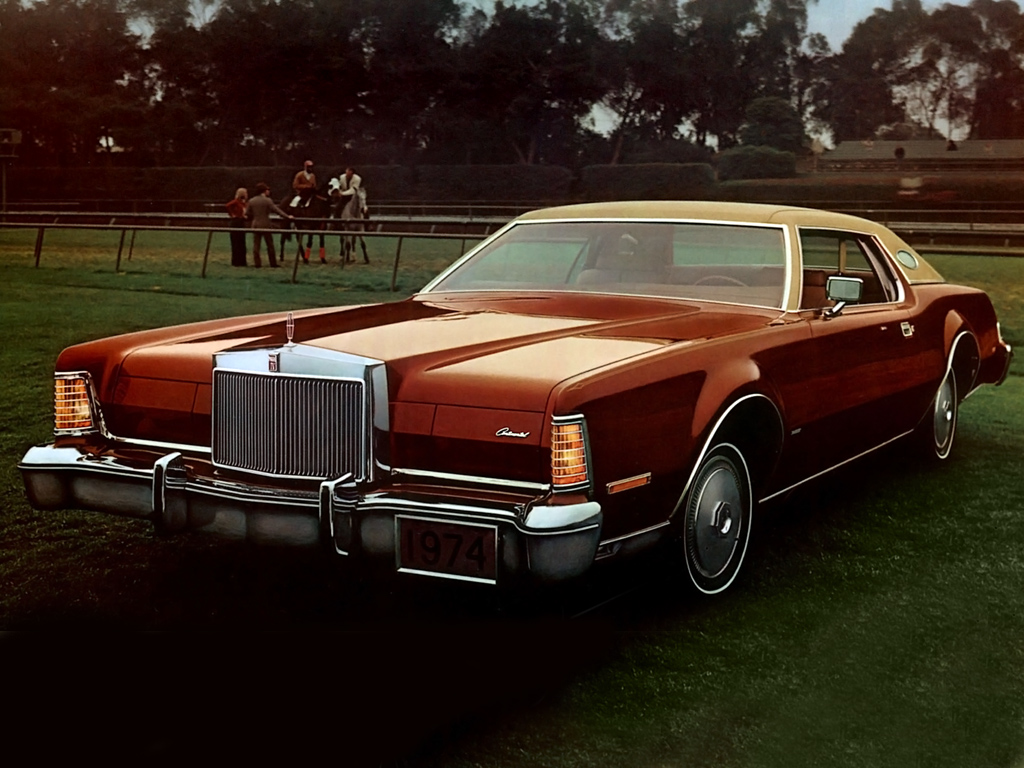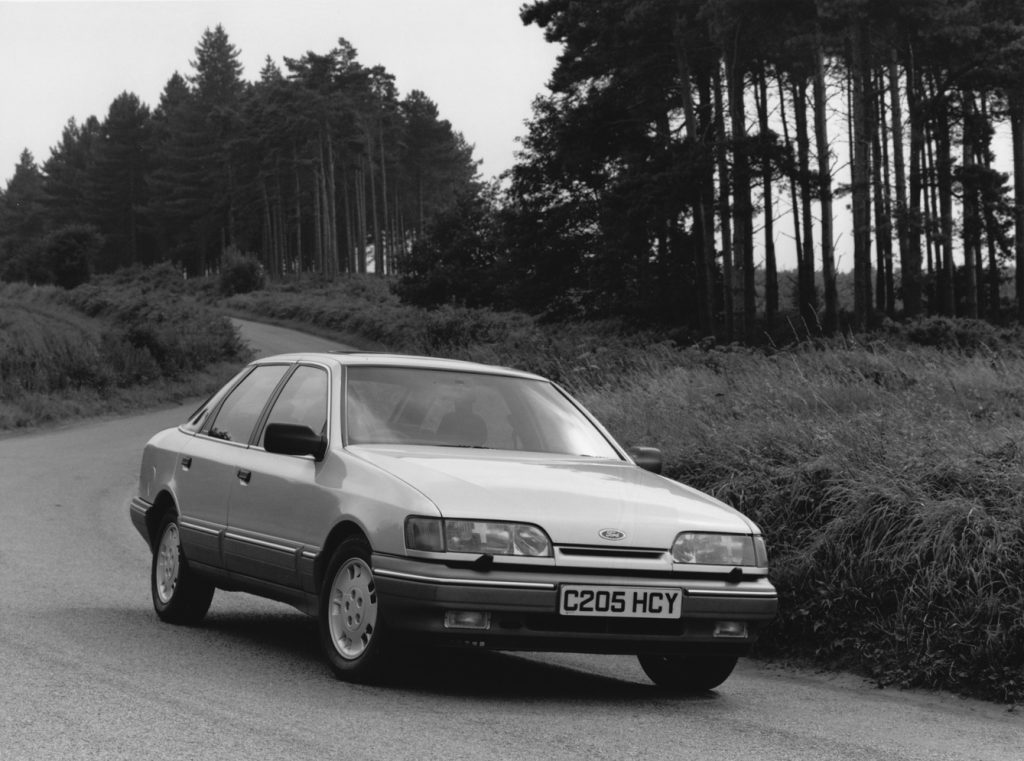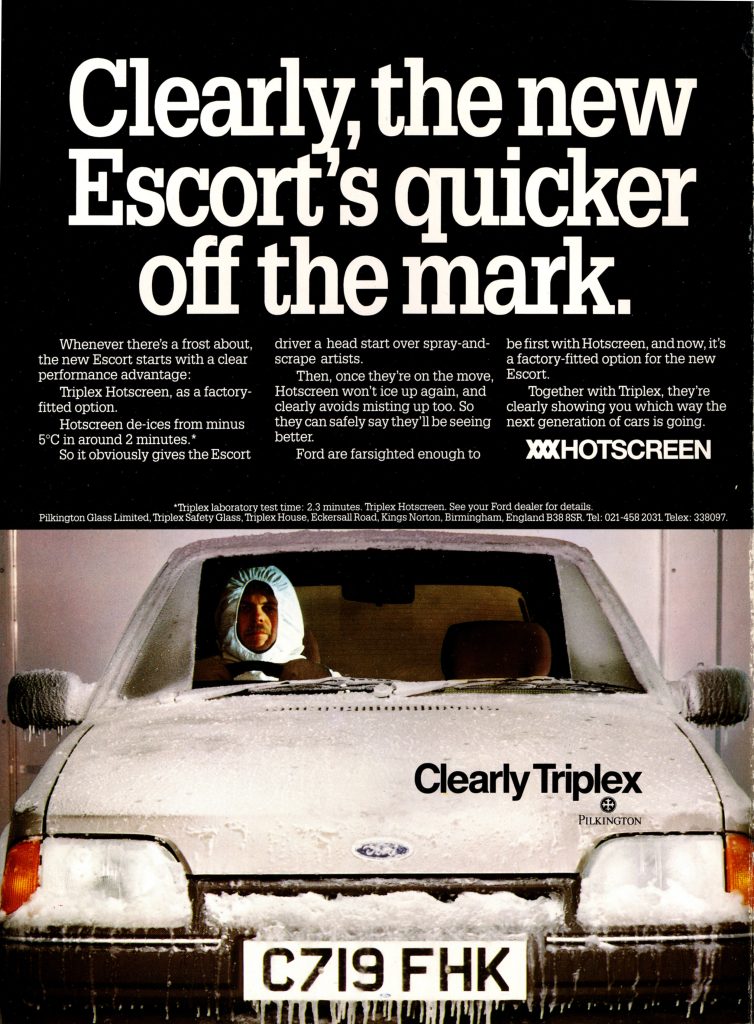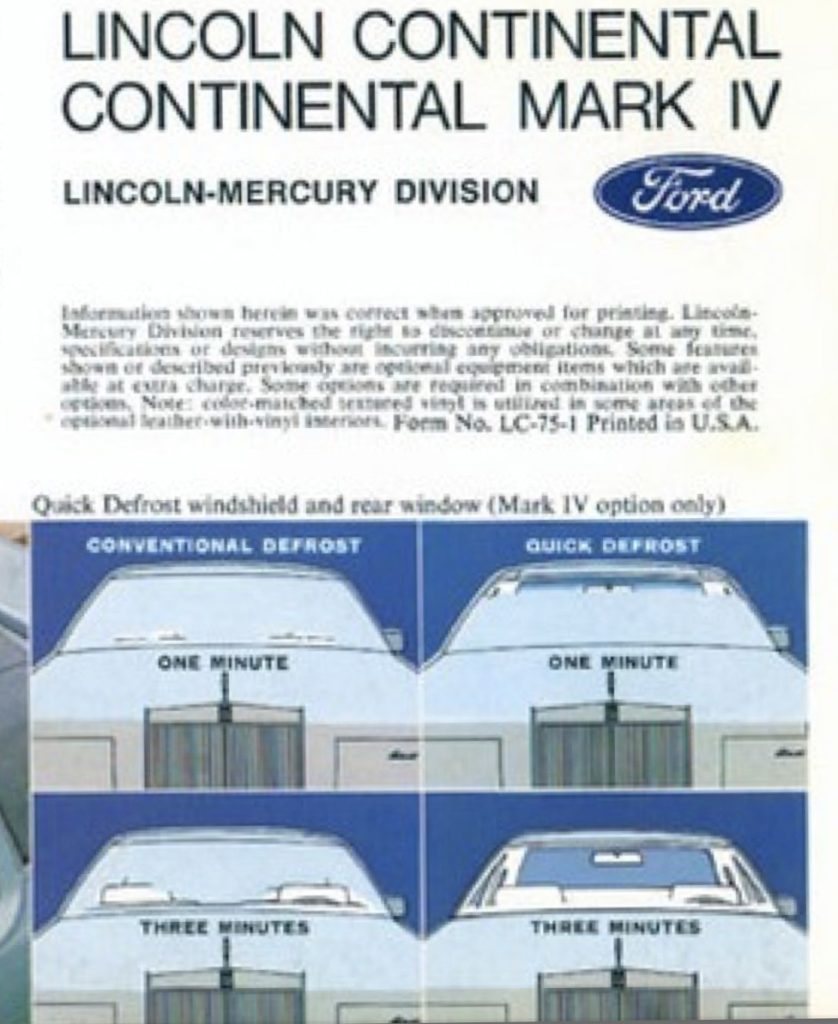What’s your stance on heated windscreens? Frozen solid and armed with an ice scraper if your car doesn’t have one. Here all day, available for birthdays and open mic sessions, etc.
A heated windscreen is the kind of feature you didn’t know you needed until Jack Frost pays a visit. Rather than arming yourself with an ice scraper or a can of de-icer, you’re able to sit in the comfort of your car while the heated screen works its magic. Your neighbours can only look on with envious eyes as ice or snow turns to water.

It’s even more miraculous if your car is of an age (or is a Caterham Seven) when ice forms on the inside of the windscreen. We’ve all been there…
Charting the history of the heated windscreen is trickier than clearing a layer of ice from the glass with a supermarket loyalty card. It almost certainly has its roots in the aviation history, as outlined in a journal published in 1986. Lowell Bitter wrote: “The history of the heated windshield begins with aircraft windshield heating in the 1940s using pyrolytic coatings. In the automotive field an unsuccessful attempt was made in the 1970s.”
Bitter is referring to heated windscreens fitted to the Lincoln Continental Mark IV and Ford Thunderbird. Ford’s optional Quick Defrost function could clear a windscreen five times faster than conventional screens, without visible heating wires. From frost to clear view in just three minutes, marginally slower than the time it took a Mark IV to reach 100mph.

The rich and informative Automotive Mileposts website outlines the success, and otherwise, of Ford’s Quick Defrost system, which featured a transparent, thinly coated gold-bearing metallic film sandwiched between layers of polyvinyl butyral and glass. A second alternator fed an electric current to the film to clear the frost or ice.
It wasn’t cheap. In 1976, the Quick Defrost upgrade cost €360, the equivalent of €1885 (£1600) in 2022. At least the Mark IV owner had a distinctive gold tint to show the world that they’d splashed the cash.
Replacement screens were almost impossible to find, forcing owners into fitting conventional glass in the event of damage. ‘Fogging’ was another issue if the Quick Defrost function wasn’t used on a regular basis, but unreliability sealed its fate, and the system was dropped.

Ford’s use of the heated windscreen was put on ice – you could say that the relationship turned frosty – but the spark was reignited in the 1980s. Dubbed Insta-Clear in the United States and the less evocative ‘windscreen rapid de-ice’ in Europe, Ford’s new and improved heated windscreen debuted on the flagship Granada Scorpio over here and the Taurus/Mercury Sable over there.
From the Taurus brochure: “Insta-clear Heated Windshield available on Taurus models with V6 engine, is capable of removing 1/10 of an inch of frost at 0 degrees Fahrenheit in just two to three minutes.”
Rather than a layer of film, Ford’s new system used a barely visible mesh of silver and zinc-oxide wires placed between two sheets of glass. Like a heated rear window, an electric current would heat the wires, clearing the fog, ice or snow.
As this memorable advert shows, the screen was produced by Pilkington under the Triplex name and labelled Hotscreen. Later, Ford trademarked the Quickclear name in Europe, which is still in use today. Contrary to popular belief, Ford didn’t own a patent on the tech, just a particular application of it.

Autocar wasn’t overly impressed with the technology. In a review of the Ford Granada Scorpio 4×4, it said: “At night, the view through heated front screen initially appears slightly hazy and street lights have a distinct starburst effect on the glass because a thin heating element is sandwiched into the laminated layers. This is just visible to the eye in certain conditions but is no real distraction once the driver is accustomed to it.”
Motor agreed, labelling the heating elements “distracting a night”. Insurance companies are likely to be more distracted by the cost of replacing a heated windscreen in the event of a stone chip.
Ford’s ownership of other companies, most notably Jaguar and Land Rover, means you’ll find heated windscreens on many cars. It was even fitted as standard on the previous generation Vauxhall Corsa, which is far cry from the days when it graced the Lincoln Continental Mark IV.

Interestingly, Ford has filed a patent for a heated side window system, which could come in handy if you’re drifting a Focus RS or Mustang on a frosty morning. Related Ford patents include heated windscreen camera viewing zones, heated wiper blades, steering wheel preconditioning and even a heated SecuriCode keypad. The heat is on, or something.
A grand is enough to buy a used car with a heated windscreen. Take your pick from dozens of Ford Focus Mk2s in Zetec Climate trim or, better still, a Focus Mk1 with a Quickclear screen. A future classic and a heated windscreen for some winter fun.
Read more
Oh yes, it’s a brief history of the nodding dog
Great inventions: the car radio
Drifting On Ice








My c reg Granada Gaia 2.0i Auto had a heated screen but it was in two parts with only the driver side working when I drove it. How ever it was excellent, especially when taking it abroad for skiing however I’d have preferred power assistance steering!
Had this facility on a 94 and 98 Mondeo worked well, but cars were garaged, my current 2018 BMW 3 series doesn’t have it and that’s too big for my garage!! Sods law.
I, still to this day, suffer from inner and outer ice at this time of year…..
At least when I use the scraper on the inside of the car I can pretend it’s snowing!
I have had a few Mondeos over the years from mk1. mk3 and mk4. My first heated screen was on a mk3 and I found it to be invaluable, especially when watching drivers of other makes having to scrape their screen on a winters morning.
I had a colleague with a Mondeo Mark II, with a heated screen which, like David’s, packed up on one side. In his case, it was the driver’s side that failed, of course.
It’s interesting to think how far de-icing and preconditioning has come since those days (especially sitting here in the middle of a very cold snap). I first had a heated screen on a 1999 Jag XJR (X308) but I’ve currently got a couple of Jags (2017 XE and 2019 F-Type convertible) both of which have heated screens, three-stage heated seats, heated steering wheels and heated washer nozzles. I can set the climate control temperature from my phone and start the engine, defrost everything and warm the cabin without stepping outside (notwithstanding that the F-Type is garaged anyway). That type of tech is fairly commonplace these days even on mainstream cars, thankfully.
2004 2 ltr Mondeo Auto had this feature as did my E Reg Vauxhall Cavalier Also My XF Jag great option to have.
Sadly my Ford KA+ is sadly lacking.
My 2015 fiesta ecoboost has it fitted and works great this time of year but my 2019 Astra tourer unfortunately does not only a fast demist fitted a real pain in freezing weather.
My 06 Mondeo ghiaX has it and this is the must need feature on any car that i would buy in future
Any body else remember the days of heated rear window kits which involved sticking a grid of metallic tape on the inside of the back screen and then wiring it to a switch on the dashboard. Not a job for the fainthearted or non technical, but it did work and at the time was a cheap option. One interesting effect was the shadow cast by a following car’s headlights which made some very dazzling patterns in the rear view mirror.
i regularly fitted heated windscreens to minis and other cars back in the 1960,s which were available from
pilkingtons glass at St Helens and were known as Triplex Hotline, and were fitted to many rally cars of that era. Then Ford poked their nose in and snapped up the patents to their own advantage for the next 50 years.
I also had a heated windscreen on my mini back in the mid 1960s. I was connected to BMC competition department in Abington at the time and that’s where mine came from. This was long before Fords had them.
My 2000 Mondeo Mk2 has the quick clear screen, which was surprisingly quick when new, now it not so. But still beats scraping !
I also discovered quite recently that the Mondeo also has heated washer jets, strangely they are permanently on ?
I recall finding a snake of washer hosing running around the top of the engine on my Rover V8 Vitesse. Thinking this to be a waste of hose I trimmed it off so it went from bottle to jets, much neater. I was told some time later that this was an attempt at heated washer fluid !